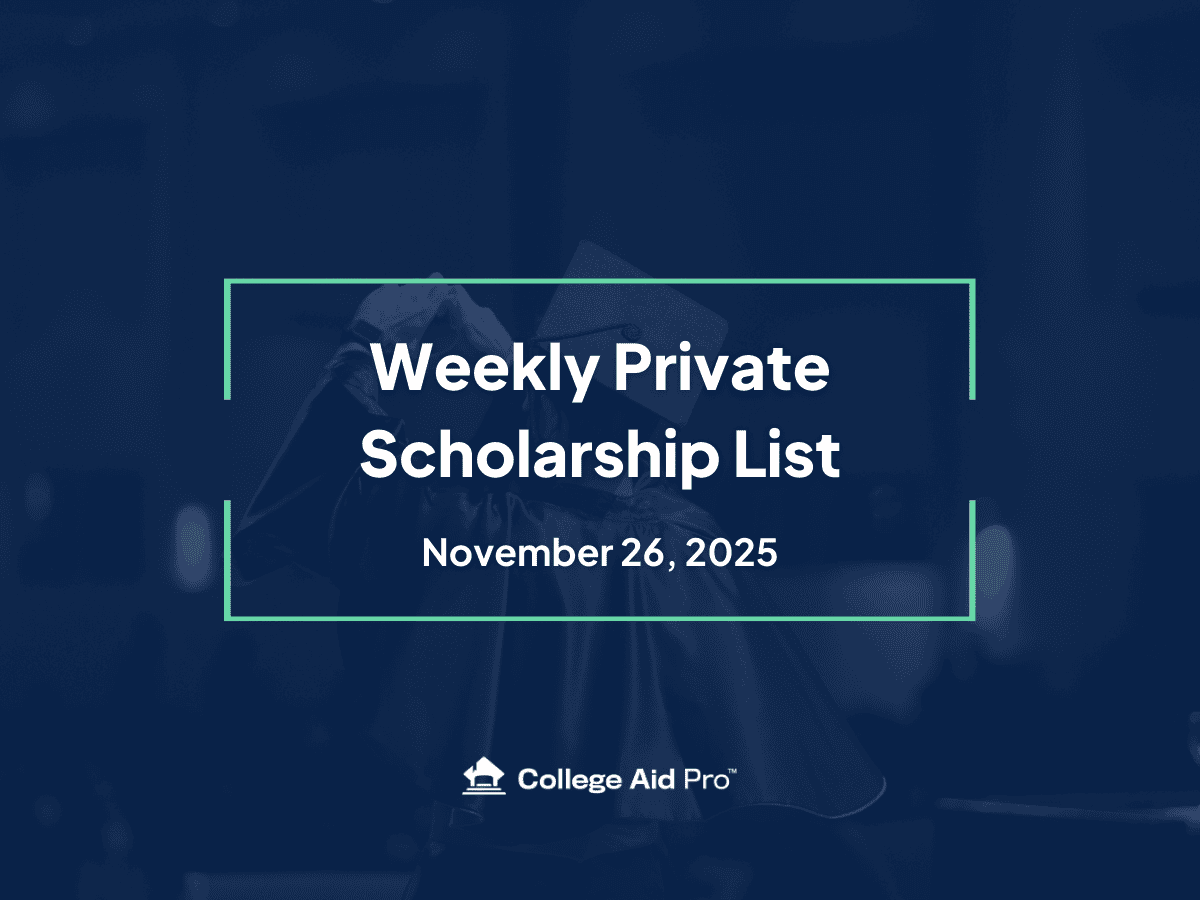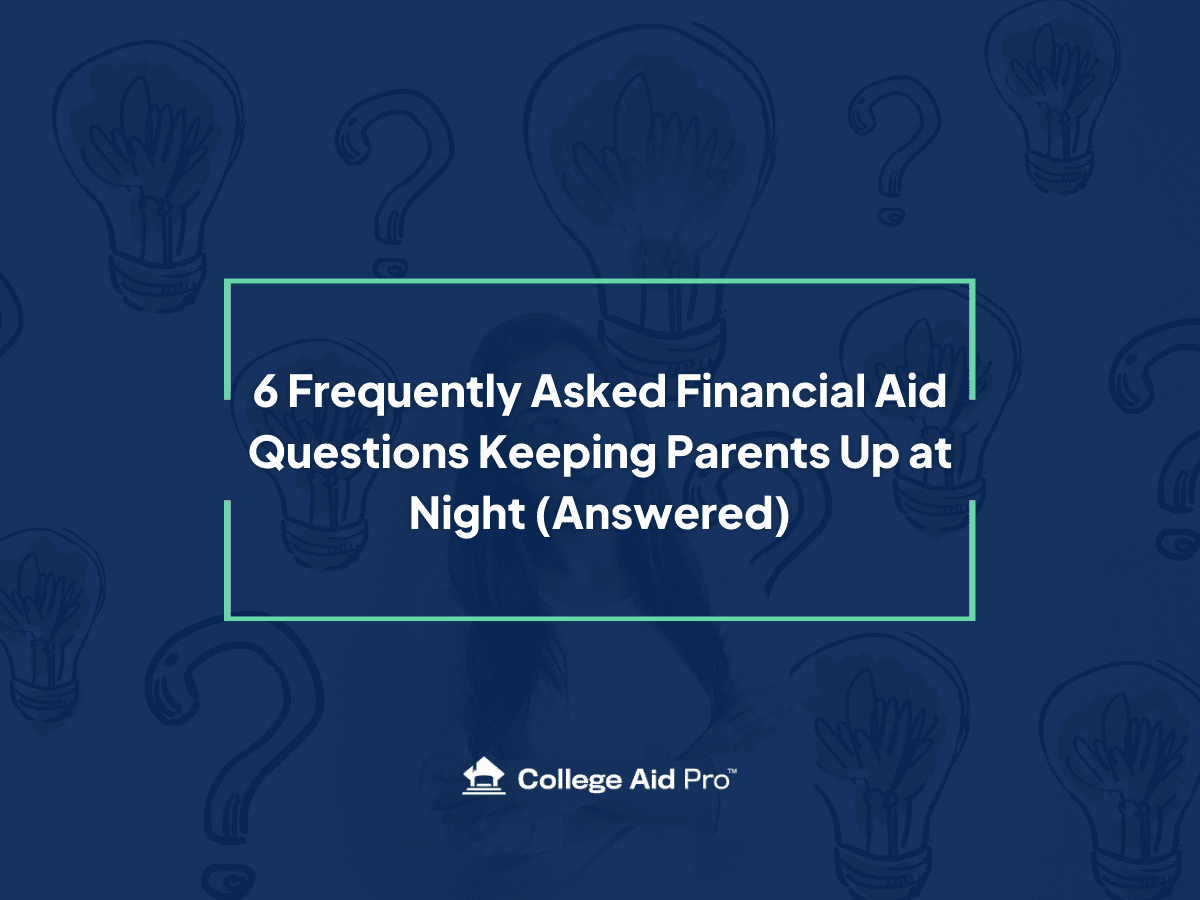Will We Qualify for Financial Aid for College?
A question on the minds of most parents with college-bound high school students. The answer depends on several factors, with parental income being one of the most important. Let’s walk through who typically qualifies for need-based aid in 2025 and how you can estimate whether your student might.
Who can Qualify for Financial Aid (Need-Based) ?
It varies widely from one college to another.
That said, here are some general patterns:
-
Families with yearly incomes under $150,000. Once family income surpasses $100,000, the number of schools offering need-based aid tends to shrink fast. Often, it’s the highly competitive, selective colleges that still offer generous need-based aid — and they tend to meet 100% of demonstrated need.
-
Families with more dependents. While the FAFSA no longer offers a break for having multiple students in college at the same time, the overall size of your household — and how many people it supports — still plays a role in determining your Student Aid Index (SAI).
-
Students accepted to elite colleges. The most selective schools (think Ivy League and other top-tier institutions) generally offer the most generous need-based aid packages. These schools typically use more than just the FAFSA to calculate aid and often meet full demonstrated need.
Important Change: No More Sibling Discount
Previously, having multiple students in college meant your Expected Family Contribution (EFC) would be divided across those students. That’s no longer the case.
Starting with the 2024-25 FAFSA, the Department of Education eliminated this discount. The EFC is now called the Student Aid Index (SAI), and it no longer adjusts based on how many kids you have in college. This is one of the most significant and challenging changes for families with more than one college-bound student.
However, some private colleges and a few public institutions that use the CSS Profile may still consider siblings in college when awarding institutional aid. That’s a crucial planning opportunity to keep in mind if you’ll have overlapping college years for multiple kids.
Estimating Your Student’s Need-Based Financial Aid

The best place to start: figure out your family’s estimated SAI and compare it to how colleges assess your financial need.
The Best Tool to Use
👉 Use MyCAP — It’s an instant net price calculator that covers every college on your list.
Why it’s better than the calculators on college websites:
-
We update our data constantly.
-
We factor in both merit scholarships and need-based grants.
-
We handle complex family situations — like divorced or separated parents, or families who own small businesses or farms — far better than most school tools.
Click here to learn why school net price calculators are often inaccurate and outdated.
Don’t Stop There: Run Comparisons
Whether you’re using MyCAP or other tools, make sure to estimate your SAI for a wide range of school types, such as:
- In-State Flagship University
- In-State Smaller Regional Public University
- Out-of-State Public University that has a reciprocity agreement with your state (discounted out-of-state tuition)
- Out-of-State Public University that does not have a reciprocity agreement with your state
- Regional Private College
- Top-tier, highly selective admissions schools
- Any other colleges your student has expressed an interest in
This gives you a clearer picture: are you eligible for need-based aid at most schools, or only at the most selective/highest-cost ones?
Why the Difference? Three Key Factors
-
Aid Methodology
Schools use different systems to calculate what you can afford:
-
Federal methodology: Uses only the FAFSA to assess aid.
-
Institutional methodology: Uses both the FAFSA and the CSS Profile.
-
-
Home Equity

Here’s where things get murky.
-
Home equity = the value of your home minus any mortgage debt.
-
Schools that use the CSS Profile may consider home equity as an asset.
-
But how they do it — and how much weight they give it — varies a lot.
-
Some cap the value they assess.
-
Some include all equity.
-
Some say it’s a “holistic review,” which is often code for “we’re not telling you.”
-
Even worse, schools can change how they treat home equity from year to year. This makes it difficult to plan without a tool like MyCAP, which stays on top of those shifts.
(Crazy that they consider the equity in your home as money you could use to pay for college, right?)
-
Generosity of the School
Some schools meet 100% of need. Others fall well short. And they all define “need” in their own way — based on their aid methodology, your SAI, and internal policies.
That’s why comparison shopping — with accurate numbers — is critical.
What’s Next?
We know this can feel overwhelming. That’s where College Aid Pro™ comes in.
-
Get a Premium MyCAP membership for just $4.99/month.
-
Want more personalized guidance? One-on-one help is available.
We’re here to help you get the most accurate estimates and uncover all your opportunities for need-based aid — before it’s too late.



